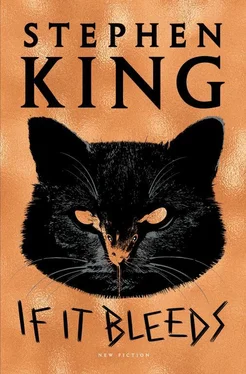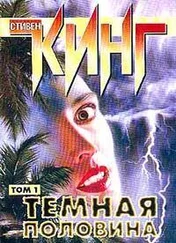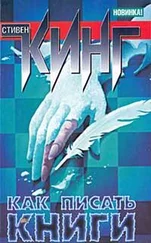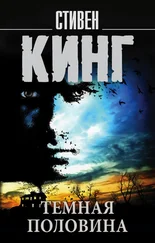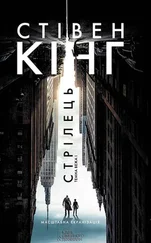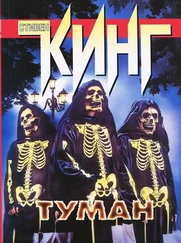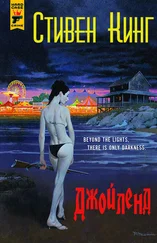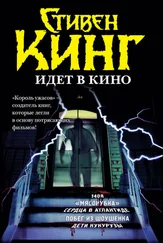“The next time he turns up—that I know about, anyway—is in Detroit,” Dan says. “1967. During what was known at the time as the Detroit Rebellion, or the 12th Street Riot. It started when the police raided an after-hours bar, a so-called blind pig, and spread city-wide. Forty-three killed, twelve hundred injured. It was the top news story for five days, which was how long the violence went on. This is from another independent station, but it got picked up by NBC and ran on the nightly news. Go ahead, Brad.”
A reporter is standing in front of a burning storefront, interviewing a black man with blood running down his face. The man is almost incoherent with grief. He says that’s his dry-cleaning business burning down across the way, and he doesn’t know where his wife and daughter are. They have disappeared into the city-wide melee. “I have lost everything,” he says. “Everything.”
And the reporter, this time calling himself Jim Avery? He’s a small-city TV guy for sure. Stouter than “Paul Freeman,” verging on fat, and short (his interviewee towers over him), and balding. Different model, same template. It’s Chet Ondowsky buried in that fat face. It’s also Paul Freeman. And Dave Van Pelt.
“How did you tip to this, Mr. Bell? How in heaven’s name—”
“Dan, remember? It’s Dan.”
“How could you see the resemblance wasn’t just a resemblance?”
Dan and his grandson look at each other and exchange a smile. Holly, watching this momentary byplay, thinks again, Different models, same template.
“You noticed the pictures in the hall, right?” Brad asks. “That was Grampa’s other job when he was on the cops. He was a natural for it.”
Once again, the penny drops. Holly turns to Dan. “You were a sketch artist. That was your other police job!”
“Yes, although I did a lot more than sketch. I was no cartoonist. I did portraits .” He thinks, then adds, “You’ve heard people say they never forget a face? Mostly they’re exaggerating or outright lying. I’m not.” The old man speaks matter-of-factly. If it’s a gift, Holly thinks, it’s as old as he is. Maybe once it blew his mind. Now he takes it for granted.
“I’ve seen him work,” Brad says. “If not for the arthritis in his hands, he could turn around, face the wall, and do you in twenty minutes, Holly, and every detail would be right. Those pictures in the hall? All people who were caught based on Grampa’s portraits.”
“Still—” she begins doubtfully.
“To remember faces is only part of it,” Dan says. “It doesn’t help when it comes to getting a likeness of a perpetrator, because I’m not the one who saw him. You understand?”
“Yes,” Holly says. She’s interested in this for reasons other than his ID of Ondowsky in his many different guises. She’s interested in it because in her own work as an investigator, she is still learning.
“The witness comes in. In some cases—like a carjacking or a robbery—several witnesses come in. They describe the doer. Only it’s like the blind men with the elephant. You know that story?”
Holly does. The blind man who grabs the tail says it’s a vine. The one who grabs the trunk thinks it’s a python. The one who grabs the leg is sure it’s the bole of a big old palm tree. Eventually the blind men get into a brawl about who is right.
“Every witness sees the guy in a slightly different way,” Dan says. “And if it’s one witness, he or she sees him in different ways on different days. No, no, they say, I was wrong, the face is too fat. It’s too thin. He had a goatee. No, it was a mustache. His eyes were blue. No, I slept on it and I guess they were actually gray.”
He takes another long pull of O 2. Looking more tired than ever. Except for the eyes in their purple pouches. They are bright. Focused. Holly thinks that if the Ondowsky-thing saw those eyes, he might be afraid. Might want to shut them before they saw too much.
“My job is to look past all the variations and see the similarities. That’s the real gift and what I put in my pictures. It’s what I put in my first pictures of this guy. Look.”
From the side pocket of his chair he takes a small folder and hands it to her. Inside are half a dozen pieces of thin drawing paper going brittle with age. There’s a different version of Charles “Chet” Ondowsky on each one. They are not as detailed as his rogue’s gallery in the front hall, but they are still extraordinary. In the first three she’s looking at Paul Freeman, Dave Van Pelt, and Jim Avery.
“Did you draw these from memory?” she asks.
“Yes,” Dan says. Again not boasting, just stating a fact. “Those first three were drawn soon after I saw Avery. Summer of ’67. I’ve made copies, but those are the originals.”
Brad says, “Remember the time-frame, Holly. Grampa saw these men on TV before VCRs, DVRs, or the Internet. For ordinary viewers, you saw what you saw and then it was gone. He had to rely on memory.”
“And these others?” She’s spread out the other three like a fan of cards. Faces with different hairlines, different eyes and mouths, different lines, different ages. All different models from the same template. All Ondowsky. She can see it because she’s seen the elephant. That Dan Bell saw it back in the day is amazing. Genius, really.
He points to the drawings she’s holding, one after another. “That one’s Reginald Holder. He reported from Westfield, New Jersey, after John List killed his whole family. Interviewed sobbing friends and neighbors. The next one is Harry Vail, reporting from Cal State Fullerton after a janitor named Edward Allaway shot and killed six people. Vail was on the scene before the blood was dry, interviewing survivors. The last one, his name escapes me—”
“Fred Liebermanenbach,” Brad says. “Correspondent for WKS, Chicago. He covered the Tylenol poisonings in 1982. Seven people died. Talked to grieving relatives. I have all these video clips, if you want to see them.”
“He’s got plenty of clips, we’ve uncovered seventeen different versions of your Chet Ondowsky,” Dan says.
“Seventeen?” Holly is flabbergasted.
“Those are just the ones we know of. No need to look at all of them. Slide those first three drawings together and hold them up to the TV, Holly. It’s not a lightbox, but it should do.”
She holds them in front of the bluescreen, knowing what she’ll see. It’s one face.
Ondowsky’s face.
An outsider.
12
When they go downstairs, Dan Bell isn’t exactly sitting in the stair-chair; it’s more like lolling. No longer just tired, exhausted. Holly really doesn’t want to trouble him further, but will have to.
Dan Bell also knows they’re not done. He asks Brad to bring him a knock of whiskey.
“Grampa, the doctor said—”
“Fuck the doctor and the horse he rode in on,” Dan says. “It’ll brighten me up. We’ll finish, you show Holly that last… thing… and then I’ll lie down. I slept through last night, and I bet I will again tonight. This is such a weight off my shoulders.”
But now it’s on mine, Holly thinks. I wish Ralph was here. I wish for Bill even more.
Brad brings his gramps a Flintstone jelly glass with barely enough whiskey in it to cover the bottom. Dan gives it a sour look but accepts it without comment. From the side pocket of his wheelchair he takes a bottle of pills with a geriatric-friendly screw-off cap. He shakes out a pill and half a dozen others spill onto the floor.
“Balls,” says the old man. “Pick those up, Brad.”
“I’ll get them,” Holly says, and does. Dan, meanwhile, puts the pill in his mouth and swallows it with the whiskey.
“Now I know that’s not a good idea, Grampa,” Brad says, sounding prissy.
Читать дальше
